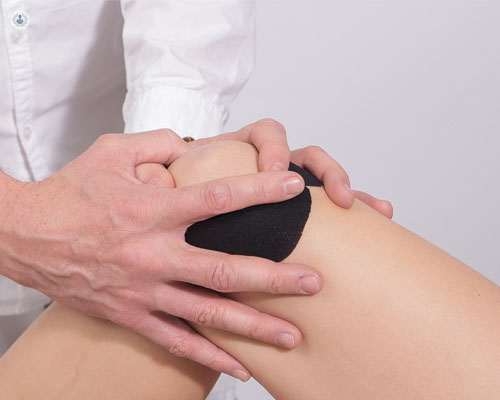Benefits of a partial knee replacement explained
Written by:In this article below, Mr Matthew Hampton, a highly revered consultant trauma and orthopaedic surgeon, describes the benefits of a partial knee replacement.

What is a partial knee replacement?
Partial knee replacement, also known as unicompartmental knee arthroplasty, is a surgical procedure aimed at alleviating pain and restoring function in patients with knee osteoarthritis. Unlike total knee replacement, which involves replacing the entire knee joint, partial knee replacement focuses only on the damaged compartment of the knee. This approach offers numerous benefits, making it an attractive option for suitable candidates.
What are the main advantages associated with a partial knee replacement?
One of the primary advantages of partial knee replacement is the preservation of healthy tissue and bone. By targeting only the affected area, surgeons can maintain more of the patient’s natural knee structure. This preservation often results in a more natural feeling knee post-surgery, as the intact ligaments and cartilage contribute to better overall knee mechanics. Patients frequently report that their knee feels more "normal" compared to those who undergo total knee replacement.
Recovery time is typically shorter with partial knee replacement. Since the surgery is less invasive, patients usually experience less post-operative pain and swelling. Many patients can return to their normal activities, including walking and even low-impact sports, much sooner than those who have a total knee replacement. This quicker recovery is a significant benefit for those looking to resume their daily routines and maintain an active lifestyle.
Another significant benefit is the reduced risk of complications. Partial knee replacement is associated with lower rates of infection, blood clots, and other surgical complications. The surgery itself is generally shorter, which can further reduce the risk of complications related to anaesthesia and prolonged surgical time.
The longevity of partial knee replacements has also improved significantly with advancements in surgical techniques and materials. While traditionally thought to be a temporary solution, modern partial knee replacements can last many years, providing long-term pain relief and improved function. This makes it a viable option for younger patients who wish to delay total knee replacement as long as possible.
Cost-effectiveness is another consideration. Given the reduced hospital stay and quicker recovery, partial knee replacement can be less expensive overall compared to total knee replacement. Patients often require fewer physical therapy sessions and may return to work sooner, reducing the indirect costs associated with longer recovery times.


